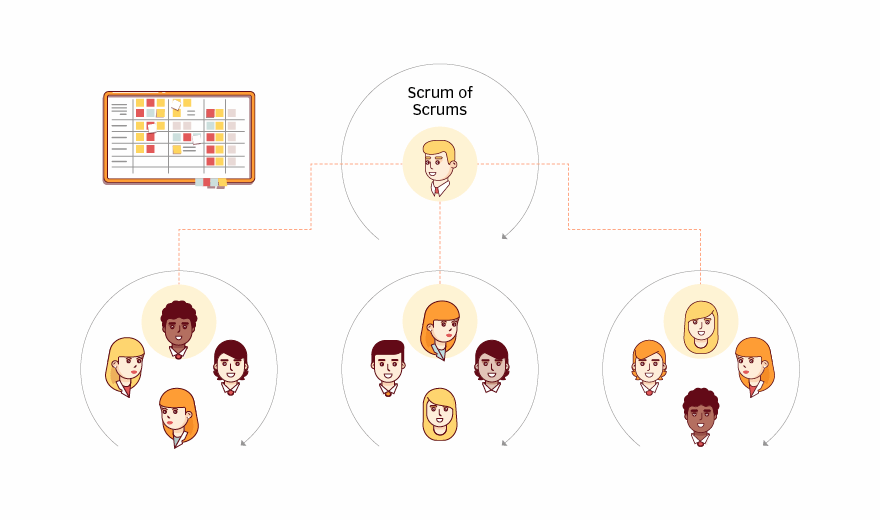Organize your team with an Agile scaling frameworks comparison
SAFe, the Scaled Agile Framework, combines Agile and Lean practices and ways of thinking with organizational structures. It addresses enterprise concerns, such as architecture and metrics of success. SAFe also relies on a system team, which builds and supports the software delivery and deployment tool chain, and Lean UX, a method for quick feedback on a system or feature.
The base organizational structure of the SAFe methodology is a release train of eight to 12 teams. In many ways, the release train is a parallel of a Scrum team. For example, while a Scrum team works in a sprint, a release train works on a program increment (PI), which is likely four to six sprints in length. A release train holds a PI planning event, similar to a Scrum team's sprint planning, in which the entire release train gets together for one to three days. Scrum teams have a product owner and Scrum master, and sometimes a tech lead. At the release train level of SAFe, the leaders include the product manager, architect and release train engineer. Scrum teams use a board to visualize the flow of work; SAFe release trains also have a board, with the pieces comprising team-level features. SAFe software development adds layers in this way to scale Agile to encompass the team members and tasks for large software products, and portfolios of products.
Scaled Agile Framework pros and cons
The SAFe methodology has name recognition in the software development and test industry, meaning potential implementers can easily find certified SAFe consultants. SAFe practitioners largely agree on the appropriate steps and processes to make it work for real-world organizations, although that's no guarantee of success.
SAFe software development practices are proven to work in certain contexts; however, don't consider that a failsafe. While each individual SAFe practice might work in a specific context, not all of the SAFe methodology's tenets will work in every context.
Historically, the framework hasn't provided much advice on tailoring or incremental adoption. To address this lack of prescriptive advice, the company behind SAFe, Scaled Agile, created Essential SAFe, a bare minimum configuration of the framework.
Some critics of SAFe point out that the Agile Manifesto emphasizes individuals and interactions, working software, customer collaboration and response to change. SAFe, conversely seems to focus on what the Manifesto explicitly de-emphasizes: processes, tools, documentation, contracts and following established plans. Some critics go one step further to claim that this emphasis means that SAFe is not Agile at all.
Don't jump into SAFe simply because the methodology has the most consultants ready to handle implementation. Ensure the configuration and tenets of the framework fit for the software development projects it would direct.







